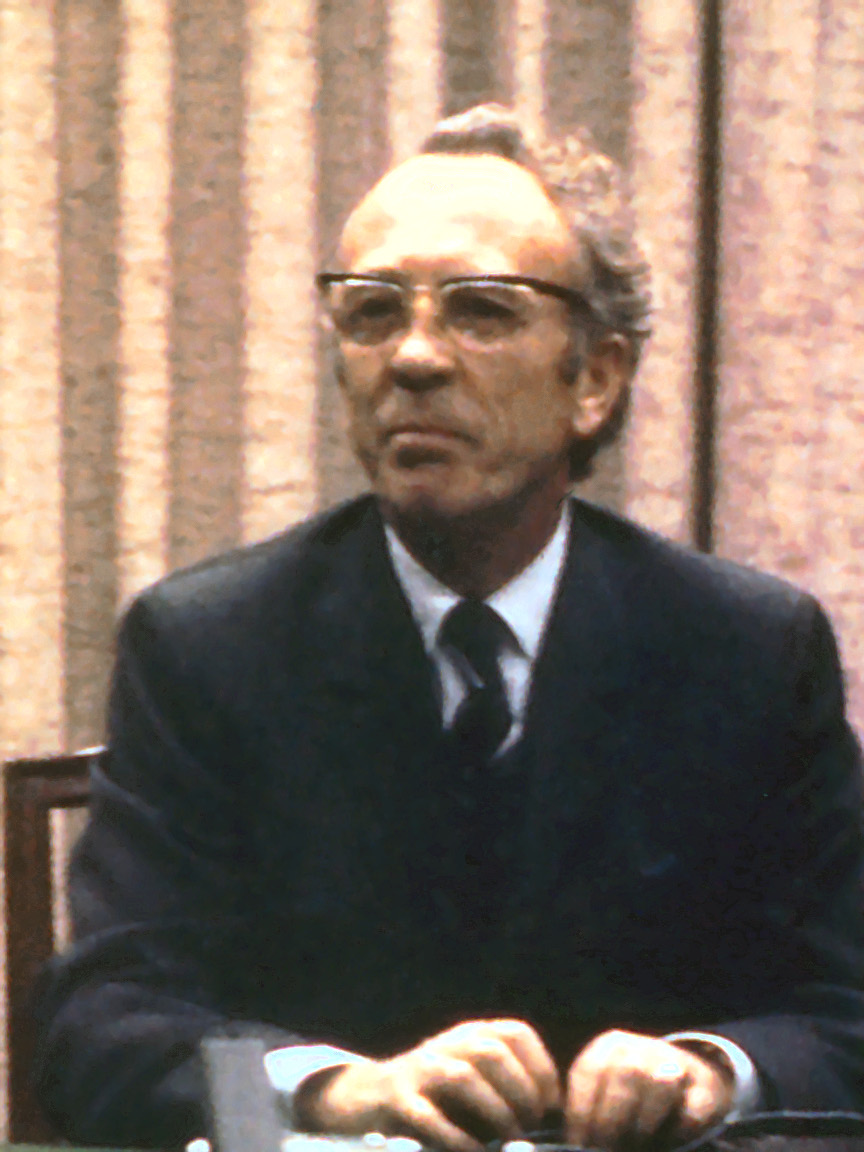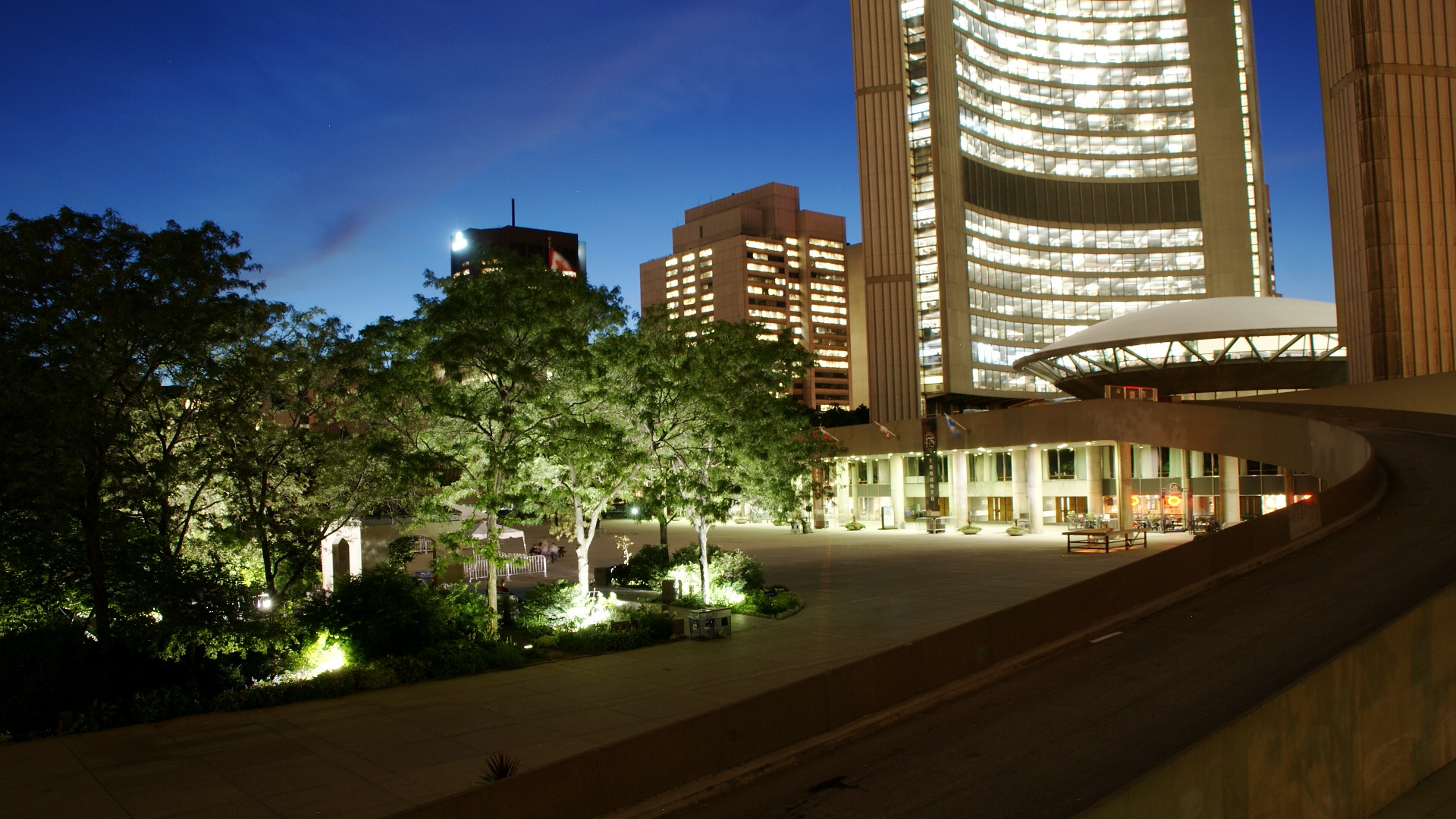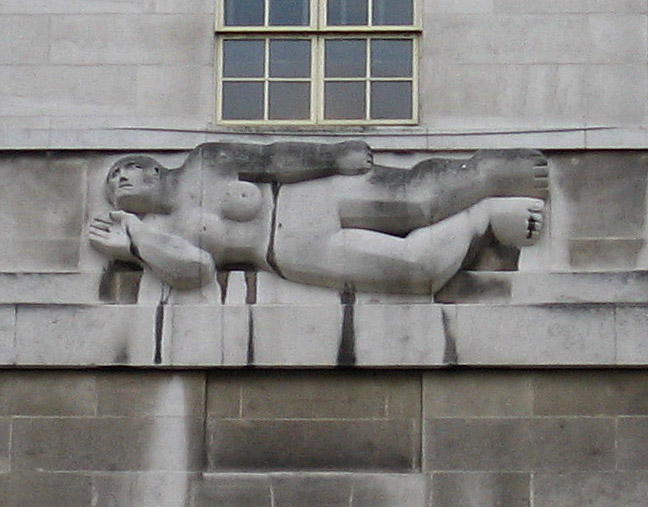|
1966 Toronto Municipal Election
Municipal elections were held in Toronto, Ontario, Canada, on December 5, 1966. The elections were the first in Toronto after its merger with several smaller suburban communities on January 1, 1967. Forest Hill and Swansea were annexed by the City of Toronto, Leaside was merged with the Township of East York to become the Borough of East York. Weston was combined with the Township of York to form the Borough of York. The Village of Long Branch and the towns of Mimico and New Toronto were merged with the Township of Etobicoke to form the Borough of Etobicoke. Rules were also changed to have municipal elections scheduled every three years, rather than every two as had been done previously. Toronto mayoral race Incumbent mayor Philip Givens was challenged by two strong opponents. Givens was associated with the Liberal Party while Controller William Archer was a Progressive Conservative. The winner was William Dennison, a former Co-operative Commonwealth Federation Member of Pr ... [...More Info...] [...Related Items...] OR: [Wikipedia] [Google] [Baidu] |
William Dennison (Canadian Politician)
William Donald Dennison (January 20, 1905 – May 2, 1981) was a Canadian social-democratic politician that served in both the Ontario Legislative Assembly and finally as the City of Toronto's mayor. He served two nonconsecutive terms as a Member of Provincial Parliament (MPP) in the 1940s and early 1950s. After his provincial-level career, he focused on Toronto's municipal politics, holding offices as an alderman, member of the Toronto Board of Control, and finally as the city's mayor. He was the mayor from 1967 to 1972, winning two consecutive three-year terms. Prior to entering politics, he was a school principal and teacher. As of 2022, he was the last mayor of Toronto to be a member of the Orange Order. Background Dennison grew up on a farm in Renfrew County. He first left home at age 15 to work in the lumber camps of Northern Ontario. As a young man, he would trek west to Saskatchewan in the summers to earn money helping with the harvest and pitching grain. By night ... [...More Info...] [...Related Items...] OR: [Wikipedia] [Google] [Baidu] |
New Democratic Party Of Canada
The New Democratic Party (NDP; french: Nouveau Parti démocratique, NPD) is a federal political party in Canada. Widely described as social democratic,The party is widely described as social democratic: * * * * * * * * * * * * the party occupies the left, to centre-left on the political spectrum, sitting to the left of the Liberal Party. The party was founded in 1961 by the Co-operative Commonwealth Federation (CCF) and the Canadian Labour Congress (CLC). The federal and provincial (or territorial) level NDPs are more integrated than other political parties in Canada, and have shared membership (except for the New Democratic Party of Quebec). The NDP has never won the largest share of seats at the federal level and thus has never formed government. From 2011 to 2015, it formed the Official Opposition, but apart from that, it has been the third or fourth-largest party in the House of Commons. However, the party has held considerable influence during periods of Lib ... [...More Info...] [...Related Items...] OR: [Wikipedia] [Google] [Baidu] |
Herbert Orliffe
Herbert Orliffe (c.1905 – 3 July 1967) was a municipal politician in Toronto, Toronto, Ontario, Canada. He immigrated with his family from Newcastle upon Tyne, Newcastle, England at age 8 and settled in Toronto. His father operated a grocery store on Harbord Street. He attended first the University of Toronto and then received a law degree from Osgoode Hall. Orliffe was an active member of the Co-operative Commonwealth Federation, CCF party and was first elected as a school board trustee for Ward 4. He eventually became chair of the Toronto Board of Education. He was elected to city council and ran for a position on the Toronto Board of Control, Board of Control in 1960, but lost by a slim margin. A month later he was appointed to the Board after William Allen (Canadian politician), William Allen resigned to become chair of Metro Toronto. He served seven years on the Board of Control, gaining a reputation as a quiet Controller who worked out compromises between his more vocal fe ... [...More Info...] [...Related Items...] OR: [Wikipedia] [Google] [Baidu] |
Joseph Piccininni
Joseph J. Piccininni (born ''Guiseppe Piccininni'', January 15, 1922 – September 16, 1995) was a long-serving city councillor in Toronto, Ontario, Canada. He represented the Corso Italia area on city council for 25 years. Background Born in Toronto, Piccininni was educated at De La Salle College and then joined his family's produce business and opened a restaurant named Piccininni's. He was very involved in soccer in the city and in southern Ontario and Quebec. He was president of the National Soccer League, with teams in Toronto, Hamilton, Kitchener, Ottawa, Sudbury, London, St. Catharines, Windsor and Montreal, from 1965 to 1977 a span of 12 years. He was elected vice-president of the Canadian Soccer Association at the 1973 AGM of the national governing body, and held this position until the 1979 AGM. Politics He was elected to city council in 1960 for a ward covering a working class area of west Toronto with a large Italian-Canadian population. He was the first representat ... [...More Info...] [...Related Items...] OR: [Wikipedia] [Google] [Baidu] |
June Marks
(Florence) June Marks, née Pacey (1923–2008) was a Toronto community activist and politician. She first ran for city council in 1962 in Ward 2 but was defeated. She was elected on her second attempt in 1964 and, in 1966, won citywide election to the Toronto Board of Control and also served on Metro Toronto Council The Municipality of Metropolitan Toronto was an upper-tier level of municipal government in Ontario, Canada, from 1953 to 1998. It was made up of the old city of Toronto and numerous townships, towns and villages that surrounded Toronto, which .... When the Board of Control was abolished for the 1969 election she ran and won in Ward 6. She was defeated in the 1972 municipal election. She ran federally for the Progressive Conservatives in Spadina in the 1974 federal election but was defeated. Marks was an advocate for improved housing in the downtown core and initiated a judicial probe into slum conditions in Toronto that resulted in more rigorous housing insp ... [...More Info...] [...Related Items...] OR: [Wikipedia] [Google] [Baidu] |
Toronto Board Of Control
The Board of Control of Toronto, Ontario, Canada, was a part of its municipal government until it was abolished in 1969. It served as the executive committee of the Toronto City Council. When it was initially created in 1896 by mandate of the provincial government, it consisted of three Controllers appointed from and by the aldermen, and presided over by the Mayor of Toronto. Beginning in 1904, the Board of Control was directly elected by the city's electorate and consisted of four Controllers, presided over by the Mayor. Each voter could vote for up to four candidates, and the four with the most votes were elected. By tradition the controller who received the most votes would get the powerful budget chief position. Functions Under the ''Municipal Act'', the Board of Control had the following duties and powers: #the preparation and certification of all estimates for expenditures #the preparation of specifications for tenders, and making awards thereon # the nomination to council of ... [...More Info...] [...Related Items...] OR: [Wikipedia] [Google] [Baidu] |
Toronto Ward Map 1966
Toronto ( ; or ) is the capital city of the Provinces and territories of Canada, Canadian province of Ontario. With a recorded population of 2,794,356 in 2021, it is the List of the largest municipalities in Canada by population, most populous city in Canada and the List of North American cities by population, fourth most populous city in North America. The city is the anchor of the Golden Horseshoe, an urban agglomeration of 9,765,188 people (as of 2021) surrounding the western end of Lake Ontario, while the Greater Toronto Area proper had a 2021 population of 6,712,341. Toronto is an international centre of business, finance, arts, sports and culture, and is recognized as one of the most multiculturalism, multicultural and cosmopolitanism, cosmopolitan cities in the world. Indigenous peoples in Canada, Indigenous peoples have travelled through and inhabited the Toronto area, located on a broad sloping plateau interspersed with Toronto ravine system, rivers, deep ravines, ... [...More Info...] [...Related Items...] OR: [Wikipedia] [Google] [Baidu] |
North Toronto
North Toronto is a former town and informal district located in the northern part of the Old Toronto district in Toronto, Ontario, Canada. Currently occupying a geographically central location within the city of Toronto, the Town of North Toronto was incorporated in 1890, when much of the area was still farmland, and annexed by the old city of Toronto in 1912. The name is still used to refer to the area in general, although Yonge–Eglinton and Midtown Toronto are officially used. The former town was bounded on the south by Moore Avenue east to Bayview Avenue, north to Eglinton Avenue, west to Bruce, north to Fairfield, west to the west boundary of Mount Hope Cemetery, then north to north of Glen Echo, west to Yonge, north to north of McNairn Avenue, then west to a line just west of Elm Road. The boundary continues south to just north of Glenview Avenue and Avenue Road, then west to a line with Proudfoot Avenue, then south to just north of Briar Hill, then south on Castlewood to Ros ... [...More Info...] [...Related Items...] OR: [Wikipedia] [Google] [Baidu] |
Rosedale, Toronto
Rosedale is a neighbourhood in central Toronto, Ontario, Canada. It was formerly the estate of William Botsford Jarvis, and so named by his wife, granddaughter of William Dummer Powell, for the wild roses that grew there in abundance. It is located north of Downtown Toronto and is one of its oldest suburbs. It is also one of the wealthiest and most highly priced neighbourhoods in Canada. Rosedale has been ranked the best neighbourhood in Toronto to live in by ''Toronto Life''. It is known as the area where the city's ' old money' lives, and is home to some of Canada's richest and most famous citizens including Gerry Schwartz, founder of Onex Corporation, Adrienne Clarkson, the 26th Governor General of Canada, and her husband, the author John Ralston Saul, as well as David Thomson, 3rd Baron Thomson of Fleet of the Thomson Corporation, the latter of whom is the richest man in Canada. Rosedale's boundaries consist of the Canadian Pacific Railway tracks to the north, Yonge Street t ... [...More Info...] [...Related Items...] OR: [Wikipedia] [Google] [Baidu] |
Nathan Phillips Square
Nathan Phillips Square is an urban plaza in Toronto, Ontario, Canada. It forms the forecourt to Toronto City Hall, or ''New City Hall'', at the intersection of Queen Street West and Bay Street, and is named for Nathan Phillips, mayor of Toronto from 1955 to 1962. The square was designed by the City Hall's architect Viljo Revell and landscape architect Richard Strong. It opened in 1965. The square is the site of concerts, art displays, a weekly farmers' market, the winter festival of lights, and other public events, including demonstrations. During the winter months, the reflecting pool is converted into an ice rink for ice skating. The square attracts an estimated 1.5 million visitors yearly. With an area of , it is Canada's largest city square. Nathan Phillips Square is used regularly for art exhibits, concerts, rallies and other ceremonies. Annual events include a New Year's Eve Party and the Cavalcade of Lights Festival lighting of the official Christmas tree. The annual ... [...More Info...] [...Related Items...] OR: [Wikipedia] [Google] [Baidu] |
Henry Moore
Henry Spencer Moore (30 July 1898 – 31 August 1986) was an English artist. He is best known for his semi- abstract monumental bronze sculptures which are located around the world as public works of art. As well as sculpture, Moore produced many drawings, including a series depicting Londoners sheltering from the Blitz during the Second World War, along with other graphic works on paper. His forms are usually abstractions of the human figure, typically depicting mother-and-child or reclining figures. Moore's works are usually suggestive of the female body, apart from a phase in the 1950s when he sculpted family groups. His forms are generally pierced or contain hollow spaces. Many interpreters liken the undulating form of his reclining figures to the landscape and hills of his Yorkshire birthplace. Moore became well known through his carved marble and larger-scale abstract cast bronze sculptures, and was instrumental in introducing a particular form of modernism to the Unite ... [...More Info...] [...Related Items...] OR: [Wikipedia] [Google] [Baidu] |
Yonge Subway
Yonge is a surname. Notable people with the surname include: * Charles Duke Yonge (1812–1891), English historian and translator of Philo of Alexandria * Charles Maurice Yonge (1899–1986), British marine biologist * Charlotte Mary Yonge (1823–1901), English author * Sir George Yonge, 5th Baronet (1731–1812), British Secretary at War and the namesake of Yonge Street * Jane Yonge, New Zealand theatre director * John Yonge (1465–1516), English bishop and diplomat * Sir John Yonge, 1st Baronet (1603–1663), English merchant and Member of Parliament * Nicholas Yonge (1560–1619), English Renaissance singer and publisher * Roby Yonge (1943–1997), American radio DJ * Thomas Yonge or Young (1405–1476), MP for Bristol and Gloustershire, justice of the Common Pleas and the King's Bench * Walter Yonge of Colyton (1579–1649), English lawyer, merchant and Member of Parliament * Sir Walter Yonge, 2nd Baronet (1625–1670) * Sir Walter Yonge, 3rd Baronet (1653–1731) * William ... [...More Info...] [...Related Items...] OR: [Wikipedia] [Google] [Baidu] |






